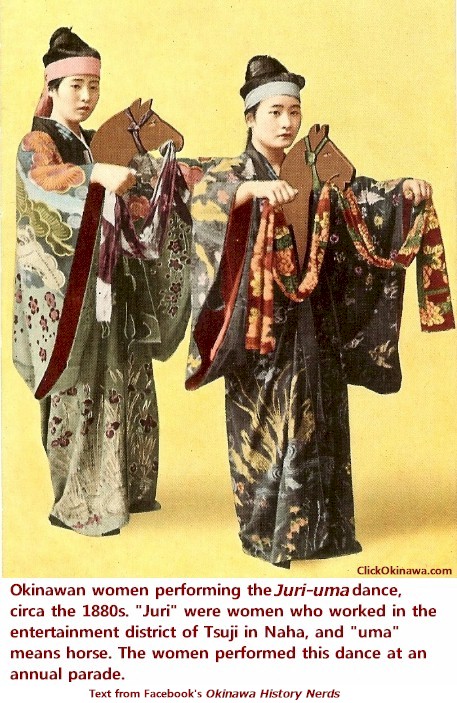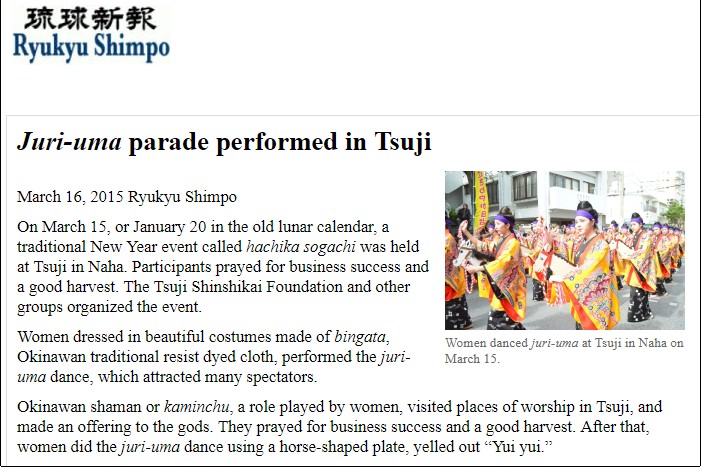
|
|
Juri-uma Dance
Published: Sep 4, 2018
Update: Feb 15, 2020
|
.
Age-old traditions do not die easily in the Ryukyu Islands. Although the bingata has .
EXTRA CREDIT: Visualizing Priestesses or Performing Prostitutes?: Ifa Fuyū’s Depictions of Okinawan Women, 1913-1943 (.pdf) Ryuka (Okinawan Lyrical Poetry) |
January 20th of the Lunar calendar heralds one of Naha's main festival parades. In the Tsuji district of Naha, renowned as the "entertainment" capital of the island, the Juri-uma Festival brings on dancers and revelry into the wee hours.
The women who worked in Tsuji district were highly skilled musicians and dancers. Indeed, most concede that many of them were also prostitutes. The majority of the women grew up in poor rural families and, as was the custom in days of old, were sold by their family into the entertainment trade. Having been acquired at a very young age the girls became "students" of the entertainment arts and were trapped in that vocation unless and until they were able to pay their way out. Their studies included learning skills such as dancing and playing the sanshin and the koto. Other subjects included the study of those things that please men. Businesses within Tsuji were founded by women, owned and operated by women, and those women had the upper hand with regard to the "new recruits" whom they had purchased from peasant families. According to Uehara Eiko (1915-1990), who was sold into prostitution in 1919, the elder women of Tsuji credit Onna Nabe for starting this yearly procession. Due to a complex romantic past, Onna was living in protection in Tsuji. Once a year, during the lunar New Year celebration, her family would attend an event known for “horse games.” So she gathered the women of Tsuji to parade through the town. The original performance started in the middle of the night and continued through morning.
References: 20th New Year, Tsujimachi, Naha - 1965
1970 Juriuma celebration, Naha, 1970
Relaxing Traditional Japanese sanshin, koto, and bamboo flute
|
©1996-2020 Contact: ClickOkinawa.com


